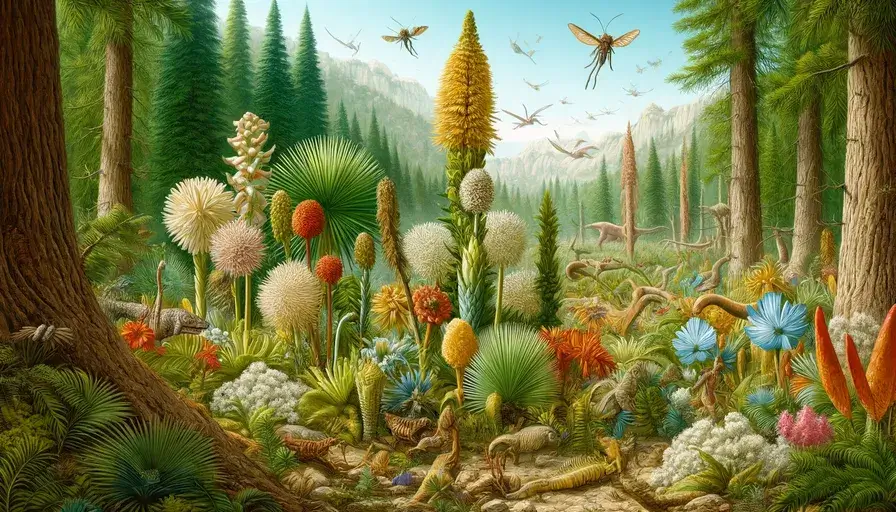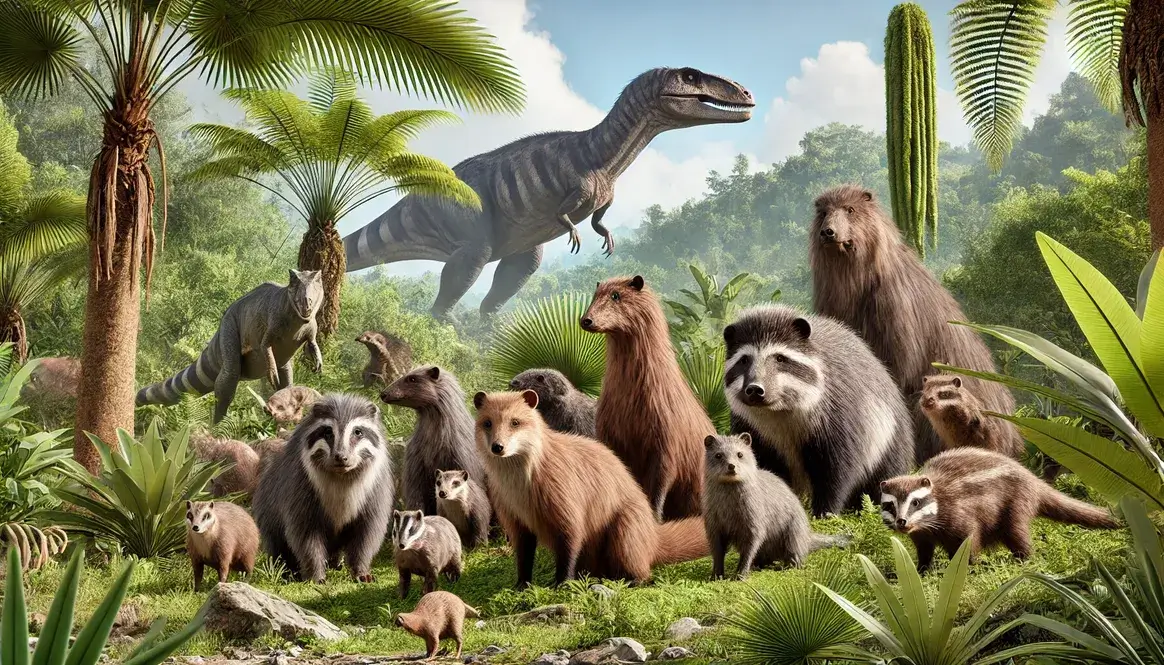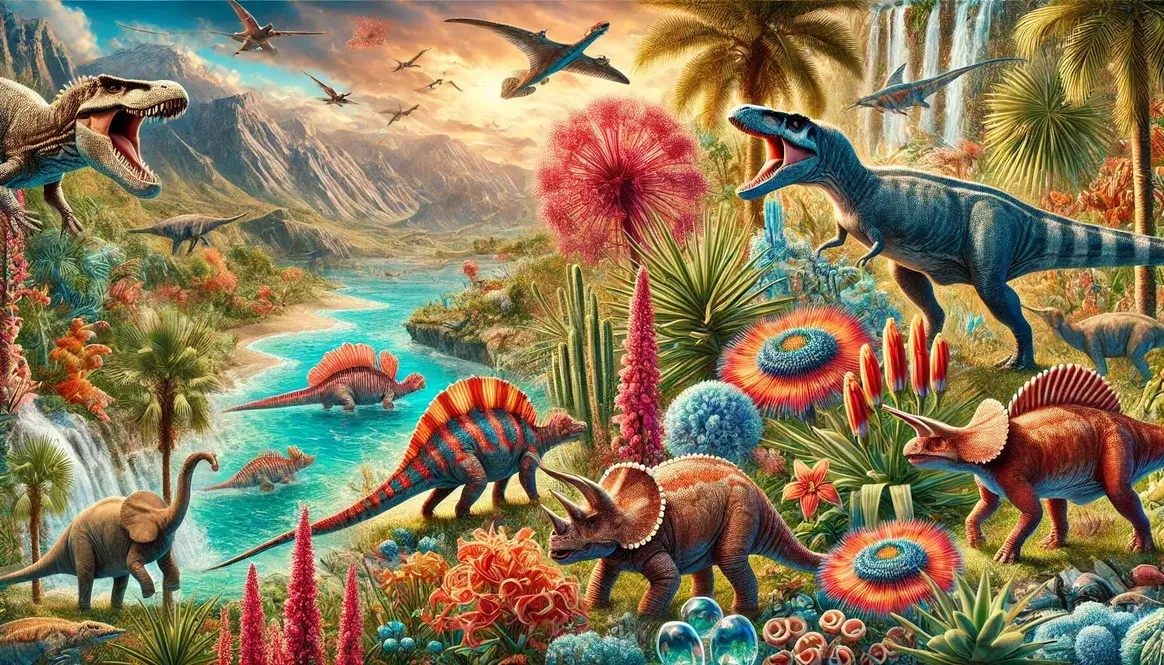Have you ever stopped to marvel at the vibrant colors and intricate designs of flowers? It’s hard to imagine a world without these beautiful blooms, but believe it or not, flowering plants haven’t always been around. In fact, their emergence during the Early Cretaceous Epoch marked a turning point in Earth’s history that would forever change the course of plant evolution.
The Early Cretaceous, which lasted from approximately 145 to 100 million years ago, was a time of great significance for plant life on Earth. It was during this period that flowering plants, also known as angiosperms, first appeared and began to diversify. Today, angiosperms are the dominant plant group on land, with over 300,000 known species. They play crucial roles in our ecosystems, providing:
- Food
- Shelter
- Oxygen
for countless organisms, including us humans.
But what made the emergence of flowering plants so remarkable? And how did they manage to thrive and outlast other plant groups that had been around for millions of years? To answer these questions, we need to take a closer look at the Early Cretaceous and the unique conditions that set the stage for the rise of angiosperms.
Timeline and Context
The Early Cretaceous Epoch was a time of great change on Earth. It began around 145 million years ago, following the Jurassic Period, and lasted until about 100 million years ago. During this time, the supercontinent Pangaea was breaking apart, giving rise to the continents we know today.
The climate during the Early Cretaceous was generally warm and humid, with high levels of carbon dioxide in the atmosphere. This created ideal conditions for plant growth, and as a result, vegetation flourished across much of the planet. However, the dominant plant groups at the time were gymnosperms, such as:
- Conifers
- Cycads
which had been around since the Triassic Period.
It was against this backdrop that flowering plants first appeared, sometime around 130 million years ago. While the exact timing and location of their emergence are still debated among scientists, fossil evidence suggests that angiosperms originated in the tropics and quickly spread to other parts of the world.
Emergence of Flowering Plants
So what made flowering plants so successful? One key advantage was their reproductive strategy. Unlike gymnosperms, which rely on wind to disperse their pollen, angiosperms evolved flowers to attract pollinators like:
- Insects
- Birds
This allowed them to reproduce more efficiently and colonize new habitats more quickly.
Early flowering plants also had unique characteristics that set them apart from their modern-day counterparts. For example, they tended to have small, simple flowers with few petals and stamens. Over time, however, angiosperms diversified and evolved more complex floral structures to better attract pollinators.
One of the oldest known fossil flowers, Archaefructus liaoningensis, was discovered in China and dates back to around 125 million years ago. This primitive angiosperm had simple, unisexual flowers arranged along a central axis, similar to modern-day catkins.

As flowering plants spread across the globe during the Early Cretaceous, they began to outcompete other plant groups like gymnosperms. Their ability to colonize new habitats quickly and form mutually beneficial relationships with pollinators gave them a significant evolutionary advantage.
| Characteristic | Angiosperms | Gymnosperms |
|---|---|---|
| Reproductive structures | Flowers and fruits | Cones and naked seeds |
| Pollination | Insects, birds, and other animals | Wind |
| Seed protection | Enclosed in an ovary (fruit) | Exposed on the surface of scales or leaves |
| Vascular tissues | More efficient; vessels for water transport | Less efficient; tracheids for water transport |
| Leaf structure | Broad, flat leaves with complex venation | Needle-like or scale-like leaves with simple venation |
| Growth rate | Faster | Slower |
| Diversity | Higher; rapid speciation and adaptation | Lower; slower speciation and adaptation |
But the story of flowering plants was just beginning. In the next section, we’ll explore how the co-evolution of angiosperms and insects during the Early Cretaceous led to an explosion of diversity that would forever change the face of our planet.
Co-evolution with Insects
As flowering plants began to diversify and spread across the globe, they formed intricate relationships with insects that would shape the course of evolution for both groups. Angiosperms evolved specialized structures like:
- Colorful petals
- Sweet nectar
- Aromatic scents
to attract pollinators, while insects developed adaptations like:
- Long proboscises
- Specialized mouthparts
- Keen senses of smell and vision
to better exploit these new food sources.
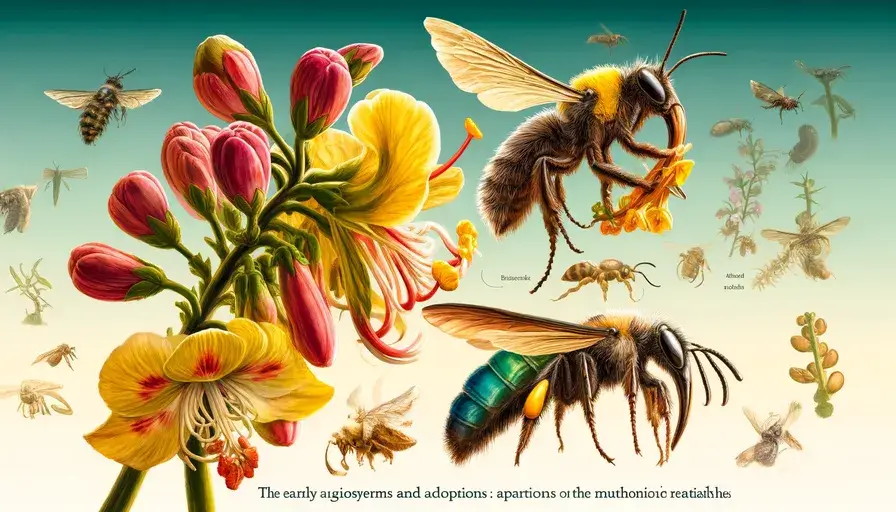
This mutualistic relationship, where both parties benefit, contributed to the rapid diversification and success of both flowering plants and pollinating insects. As angiosperms evolved new floral structures and rewards, insects evolved new ways to access and transport pollen, leading to a dazzling array of specializations and adaptations.
One of the most iconic examples of this co-evolutionary dance is the relationship between flowers and bees. Bees are among the most important pollinators on Earth, and their evolution is closely tied to that of flowering plants. The earliest known bee fossil, Melittosphex burmensis, dates back to around 100 million years ago, right in the midst of the Early Cretaceous angiosperm boom.
Impact on Ecosystems
The emergence of flowering plants during the Early Cretaceous had far-reaching impacts on ecosystems across the globe. As angiosperms diversified and spread, they began to outcompete other plant groups and transform the landscape in ways that would have profound effects on biodiversity.
One of the most significant ecological implications of the angiosperm revolution was the creation of new habitats and food sources for a wide variety of organisms. Flowering plants provided:
- Nutrient-rich leaves and stems for herbivores
- Colorful petals and sweet nectar for pollinators
- Fruit and seeds for frugivores and granivores
This abundance of new resources led to the diversification of entire food webs, from insects and birds to mammals and dinosaurs.
Angiosperms also had a major impact on nutrient cycling and soil formation. Their deep root systems helped to break down rocks and minerals, releasing essential nutrients into the soil. Flowering plants also formed symbiotic relationships with fungi, which helped them to access even more nutrients and water.
Over time, the spread of angiosperms across the landscape led to the formation of new biomes, like grasslands and deciduous forests, which would become home to countless species of plants and animals.
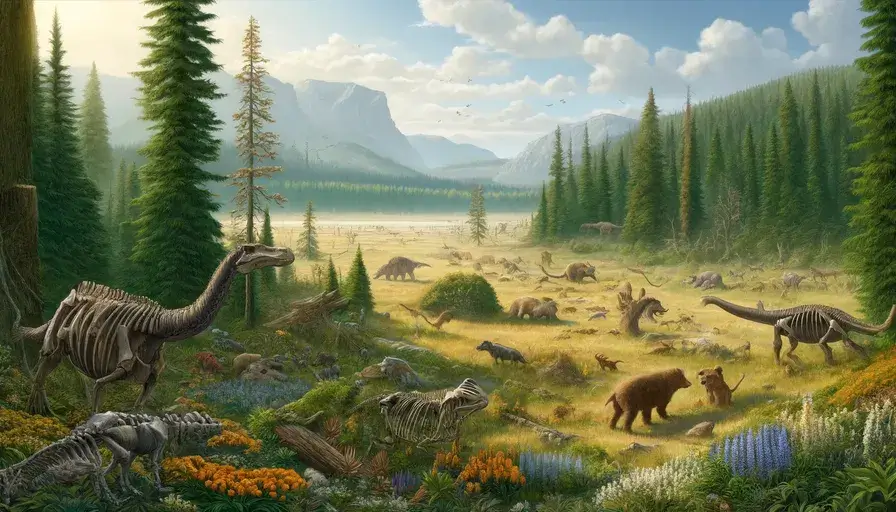
Evolutionary Adaptations
So what allowed flowering plants to be so successful in the face of competition from other plant groups? The answer lies in a series of key evolutionary adaptations that gave angiosperms a significant advantage in the race for survival.
| Adaptation | Function | Significance |
|---|---|---|
| Flowers | – Attract pollinators – Protect reproductive organs – Control pollen transfer | Allowed for more efficient and targeted pollination, leading to higher reproductive success |
| Fruits | – Protect and nourish seeds – Attract animal dispersers – Aid in colonizing new habitats | Provided a way for angiosperms to spread their seeds far and wide, helping them to occupy new niches |
| Vascular tissues | – Transport water and nutrients efficiently – Support taller and faster growth – Enable colonization of diverse habitats | Gave angiosperms a competitive edge over other plant groups, allowing them to grow larger and faster |
| Chemical defenses | – Protect against herbivores – Deter pathogens and parasites | Helped angiosperms to avoid being eaten or infected, increasing their chances of survival and reproduction |
One of the most important adaptations was the development of specialized reproductive structures, like flowers and fruits. Flowers allowed angiosperms to:
- Attract pollinators
- Protect their reproductive organs
- Control the timing and direction of pollen transfer
Fruits, on the other hand, provided a way for flowering plants to:
- Protect and nourish their seeds
- Attract animals to disperse them
- Colonize new habitats
Another key adaptation was the evolution of vascular tissues that allowed angiosperms to:
- Transport water and nutrients more efficiently
- Grow taller and faster than their competitors
- Colonize a wider range of habitats
Angiosperms also developed a variety of chemical defenses, like:
- Tannins
- Alkaloids
- Terpenes
to protect themselves from herbivores and pathogens.

Conclusion
The emergence of flowering plants during the Early Cretaceous was a pivotal moment in Earth’s history that would forever change the course of plant evolution and the trajectory of life on our planet. Through a combination of innovative adaptations, mutualistic relationships with pollinators, and sheer competitive prowess, angiosperms managed to outcompete other plant groups and rise to dominance in ecosystems across the globe.
Today, flowering plants are the most diverse and abundant group of land plants, with over 300,000 known species. They provide countless ecosystem services, from regulating climate and nutrient cycling to providing food, medicine, and raw materials for human societies.
The story of flowering plants is one of resilience, innovation, and co-evolution, and it continues to unfold to this day. As we face the challenges of climate change and biodiversity loss in the 21st century, understanding the evolutionary history and ecological importance of angiosperms has never been more crucial.
So the next time you stop to smell a rose or admire a field of wildflowers, take a moment to appreciate the incredible evolutionary journey that made it all possible. And if you’re curious to learn more about the fascinating world of paleobotany and plant evolution, here are a few resources to get you started:

